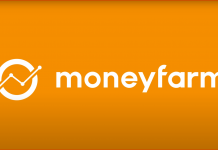You can find a more recent EOS Review: here
EOS is an Ethereum like blockchain technology, created by Dan Larrimer. Creator or Steem and BitShares. The ICO of this project starts on June 26, 2017, at 13:00 UTC.
EOS Strengths:
- Dan Larrimer has created two very successful projects: Bitshares and Steem.
Main features: - Parallel Processing: The ability to do things in parallel, faster transaction speeds and more scalability.
- A Constitution: A set of rules on which everyone agrees upon, these are linked to every block mined.
- Self Sufficiency and Evolution: The current model allows for a 5% inflation, this will be used to develop the network further.Decentralised operating system:
- EOS is similar to a decentralised operating system, in practice this means that developers can build applications on EOS. Owning EOS coins is a claim on server resources. A developer needs to have EOS coins to use the EOS blockchain. Developers will not spend the coins to use the server resources, s/he just need to prove they hold them.This operating system will be hosted on servers (data centres) which in return will
- This operating system will be hosted on servers (data centres) which in return will also be block producers. Block rewards in EOS are the incentive for these servers to host EOS applications.
- The applications running on this decentralised OS will be able to communicate with each other, there will also be measures to “firewall” applications.
- Applications use very common functions such as user/password, user interfaces, backend (database) management. This means that applications can share frameworks or libraries which make development faster, more secure and less technical. For example, applications will have their own secure database and file space on EOS.
- EOS will allow developers to create blockchain applications with which end users will easily interact with. Probably most users would not even know that they will interact with one when using EOS as this will be completely transparent to the users.
- Etherum does a very poor job of making interacting with their blockchain a user-friendly process.
- EOS main competitor Etherum, demands users to pay for every transaction. EOS will not do so. This will incerase adoption.
- ERC20 like tokens can be created on EOS, this means that ICOS can be hosted on this blockchain.
- The ICO is one year long this should increase distribution, which should increase adoption.
- 200,000,000 two hundred million – distributed during a 5 day period beginning on June 26, 2017 at 13:00 UTC and ending on July 1, 2017 at 12:59:59 UTC.
- 700,000,000 seven hundred million – split evenly into 350 consecutive 23 hour periods of 2,000,000 EOS tokens each beginning on July 1, 2017 at 13:00:00 UTC.100,000,000 one hundred million – will be reserved for block.one and cannot be traded or transferred on the Ethereum network.
- 100,000,000 one hundred million – will be reserved for block.one and cannot be traded or transferred on the Ethereum network.
EOS Challenges
- The current ICO market is very agitated. To me, it feels a bit like a mania at this time.
- Ethereum has the first mover advantage in the smart contract space, a lot of systems have been built on Ethereum and it has proven itself to be a commercial grade blockchain. It is not impossible for Ethereum to adopt the same model. It is already planning to change from a POW to a POS.There are other
- There are other competitors besides Etherum for example, RChain, Rootstock/RSK, and Crown have not yet released their smart contract / decentralised platform suite but once they do it could be cheaper and easier for developers to use these new platforms.
- There are other blockchains with smart contract capability such as BitShares and Graphene currently. These have limited smart contract capabilities at this time but they could adapt their systems to a similar model in the future.
- Smart contracts will be readable code rather than binaries. This would make maintaining proprietary smart contract tech confidential difficult. < I am doing further research on this point.
- Dan Larrimer has a history of moving on to the next thing, he did so with Steem and Bitshares. This is not necessarily a bad thing, but if the timing is not right the project could suffer.
- There is no cap on the amount of money being funded in this ICO. How will the excess funds be managed? Could this lead to a hyper valuation? What happens once the tokens can be moved? Would short-term investors try to make a quick buck, sell and cause the prices to crash?
Is EOS a good investment?
This question is impossible to answer at this time. The current ICO mania could be a factor in buying tokens at a high price, the regulation around tokens is weak at best. EOS is still a baby and still needs to make it’s first steps before it can be considered mature. On the other hand, EOS is the first decentralised operating system. Investing in this ICO is a risk, but the rewards could be equally high. EOS is a good investment according to one’s own personal risk regarding investments and investment portfolio. Good Luck
More information on EOS:
EOS ICO some thoughts:
- Bidding at the start of the first five days means that probably investors will pay a higher gas price.
- The ICO structure means that investors in the first round could pay $1 for 1 EOS while investors on a Sunday in the middle of August could pay $1 for 100 EOS.
- It is impossible to determine who will pay less for their EOS. Would diversification solve this problem?
- On the other hand, if investors hold buying off for later they could find themselves in a much larger group with the same idea.
- Probably, savvy investors will have algorithms to check how much money has been invested on a particular day and then bid at the very last moment. My guess is that this system could probably harmonise the price of the ICO on each day.










